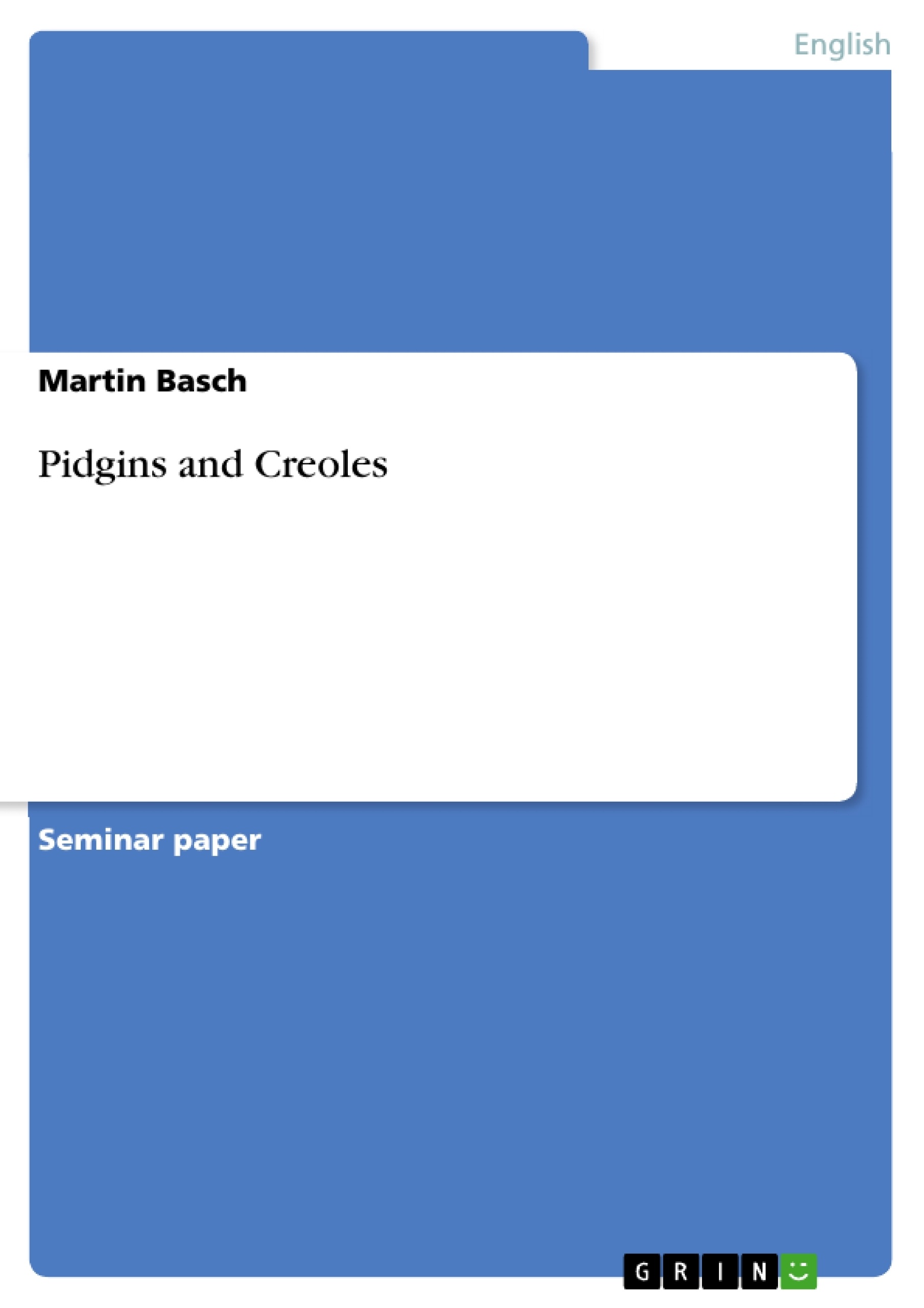The field of sociolinguistics deals with the relationship between language and society. According to the commentary for the seminar, “sociolinguists study the social and situational variables that govern variation within a language.” Pidgins and Creoles seem to be very interesting and fascinating for sociolinguists because this topic contains several areas of research like the origin of language, language loss, social contact and language prestige and definitely the rapid development and change of these languages.
The development of Pidgins and Creoles has a long history. It is said to have started with the European colonization overseas in the fifteenth century, although it is supposed that there must have been lots of language contact before. “Indeed, language contact seems likely to be nearly as old as language itself” (Holm 2000: 14). Mark Sebba does therefore give his book the title “Contact Languages” and the subtitle is “Pidgins and Creoles”. It is about the contact between people speaking different languages who need a certain language to get in contact. An example therefore is “Russennorsk” that developed from the need of Russian sailors and Norwegian fishermen who needed to communicate somehow (Singh 2000: 2). However, this language does not exist any longer and has died. Research questions would be: Why did this “language” die or how did it develop; which language was responsible for lexicon and which one for grammar; were there any grammatical rules at all?
In the first chapter, I will give definitions and explain important terminology. After that, I will deal with several theories of the genesis of Pidgins and Creoles and how the development of the “new” language from the beginning to a Post Creole Continuum does proceed. In the final chapter, I will exemplary describe the Spanish-based Creole language Papiamentu in detail.
Inhaltsverzeichnis (Table of Contents)
- Introduction
- Important Terminology
- Theories of Origin
- The superstratal language
- The substratal language
- The Universalists theory
- Development from Pidgin to Creole
- The Creole language Papiamentu
- Text sample from Papiamentu
- General information
- Origin of the language
- Lexicology of Papiamentu
- Grammatical features of Papiamentu
- Papiamentu in current affairs
- Conclusion
Zielsetzung und Themenschwerpunkte (Objectives and Key Themes)
This paper explores the complex relationship between language and society through the lens of pidgins and creoles. The objective is to provide a comprehensive overview of the origins, development, and characteristics of these unique languages, specifically focusing on the Spanish-based Creole language Papiamentu. Key themes include:- The origins and development of pidgins and creoles
- Theories of pidgin and creole genesis, including superstratal, substratal, and universalist perspectives
- The distinctive features of pidgins and creoles, such as their simplified grammatical structures, reduced vocabularies, and unique phonological features
- The evolution of pidgins into creoles and the development of post-creole continua
- The sociolinguistic context of pidgins and creoles, including their roles in language contact, social identity, and language change.
Zusammenfassung der Kapitel (Chapter Summaries)
The paper begins by defining key terminology, including pidgin and creole, and exploring the historical context of their development. It delves into various theories of origin, highlighting the role of superstratal, substratal, and universalist influences. The paper then examines the process of pidginization and creolization, outlining how pidgins evolve into creoles and the characteristics of the resulting languages.
The final chapter focuses on the Creole language Papiamentu, providing a detailed description of its origins, lexicon, grammar, and sociolinguistic context. The chapter includes a text sample in Papiamentu to illustrate its unique features.
Schlüsselwörter (Keywords)
The main focus of this paper lies in the fields of sociolinguistics, language contact, and language change. Key concepts include pidgins, creoles, creolization, language universals, superstratal influence, substratal influence, language prestige, and the Creole language Papiamentu.- Citation du texte
- Martin Basch (Auteur), 2009, Pidgins and Creoles, Munich, GRIN Verlag, https://www.grin.com/document/134758



